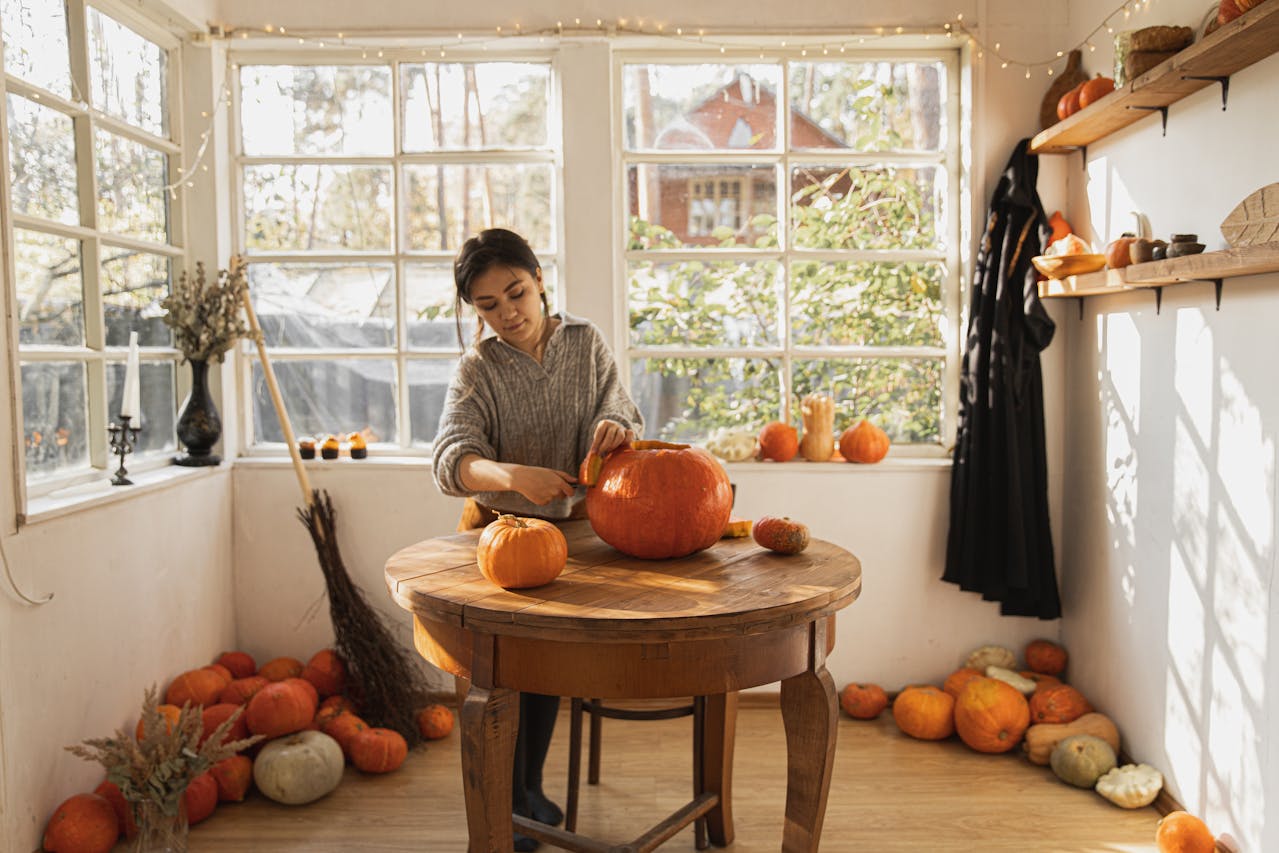By Serin Quinn, University of Warwick; The Conversation

Pumpkins have come a long way since then, as Indigenous American communities carefully adapted the wild pumpkin into successively bigger and better-tasting varieties. (Pexels Photo)
October heralds the beginning of pumpkin season. Over the course of the month, they will be used for a variety of non-culinary purposes. In Belgium, they are hollowed out for boat races, and in Ludwigsburg, Germany, thousands of multi-coloured pumpkins are used to make seasonal sculpture parks. At the end of the month, they will be carved up with a ghoulish grin to celebrate Halloween, a tradition that is becoming increasingly popular across the globe.
Despite being harvested until December, for many, Halloween will mark the end of pumpkin season with the decorations unceremoniously binned. Studies show that just over half of the pumpkins bought in the UK each year (18,000 tonnes of them) go to waste uneaten. Many people don’t even realise that pumpkins are edible.
But it hasn’t always been this way: pumpkin carving is actually a fairly recent tradition, practiced in the US since around the 1890s. Before becoming the symbol of Halloween, pumpkins had a very long history as a foodstuff.
Like tomatoes, maize and potatoes, the pumpkin is indigenous to the Americas, with the earliest evidence of pumpkin consumption dating as far back as 8,000BC in Oaxaca, Mexico.
Pumpkins have come a long way since then, as Indigenous American communities carefully adapted the wild pumpkin into successively bigger and better-tasting varieties. These weren’t all the bright orange we’re familiar with: white, green and yellow varieties were also common, mixed in with squashes (a genetically identical relation).
In pre-colonial America, there were a host of different ways to prepare the vegetable, as pumpkin historian Cindy Ott explains. She wrote that Indigenous communities ate pumpkins in soups, roasted them on embers, made them into sauces and baked them into a “bread”.
Pumpkins and squash were commonly grown and eaten with maize and beans; a combination sometimes called the “three sisters”.
The rise of the ‘pompion’
The pumpkin only came to Europe in the 1500s, following the invasion of the Americas. This new vegetable wasn’t as much of a surprise to Europeans as we might expect: gourds, cucumbers and melons are from the same family as pumpkins, Curcubitaceae, and the plants all look very similar, with trailing vines and large golden flowers.
In European languages, the new plant was given the name of these more familiar foods, so that in English and French it became the pompion (another name for melons), in Italian the zucca and in German the kürbis (both names for gourds).
All these overlapping names caused some confusion. In 1640, botanist John Parkinson wrote of “gourds or millions, or pompions, or whatsoever else you please to call them”.
The recipes that pumpkins are best known for in today’s Anglo-American cuisine come from this era of food history. “Pumpion” pies started to appear in English recipe books in the 1660s, but they weren’t much like today’s versions.
An early printed recipe was written by Hannah Woolley, an English writer who published books on household management, in 1672. It instructs the reader to fry egg-coated slices, mix these with raisins, sugar and fortified wine then place the mixture in a pie dish on top of apples. A little different maybe, but it doesn’t sound too bad.
The apple association stayed strong in England. Another method, recorded in 1735, was to scoop out the pulp, mix it with chopped apples and sugar, bake this in the hollowed pumpkin, then eat it spread on bread. The author was careful to note that this meal was “too strong for persons of weak stomachs, and only proper for country people who use much exercise” – so be careful if you try this at home.
The pie recipes followed a longer tradition of sweet-and-savoury pies which were popular in England at the time. This is also where we get the typical “pumpkin spice” from. These pies were made with artichokes, sweet and ordinary potatoes, and even earlier with parsnips, skirrets and eryngoes (once popular root vegetables). They were mixed with the go-to expensive spices of the day: cinnamon, nutmeg, mace, cloves, ginger and sugar. Maybe we should be calling it the “skirret spice latte”.
As Europeans steadily colonised America over the 17th century, they brought with them their familiar recipes, including spiced pies. Here, in the home of pumpkins, they had an abundance to make them from.
The steady rise of Halloween in the globalised age suggests our current waste issue will get worse before it gets better. Reviving the egg-apple-pumpkin pie might not be the solution, but there are plenty of other ways we can use these versatile vegetables. Remembering that pumpkins had millennia of history as a food before they were a decoration is one step on the way.

Looking for something good? Cut through the noise with a carefully curated selection of the latest releases, live events and exhibitions, straight to your inbox every fortnight, on Fridays. Sign up here.![]()
Serin Quinn, PhD Candidate, Department of History, University of Warwick
This article is republished from The Conversation under a Creative Commons license. Read the original article.





















